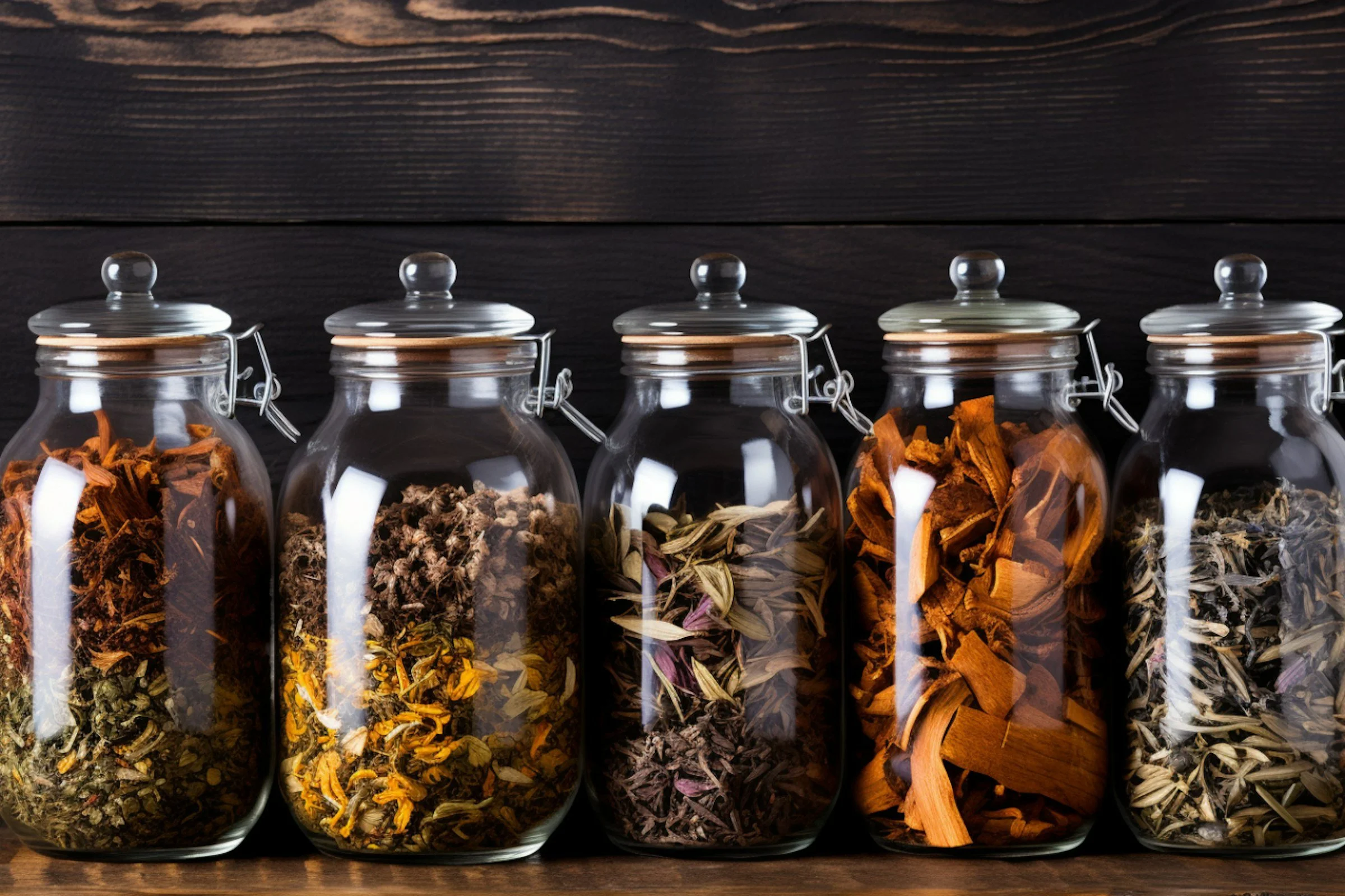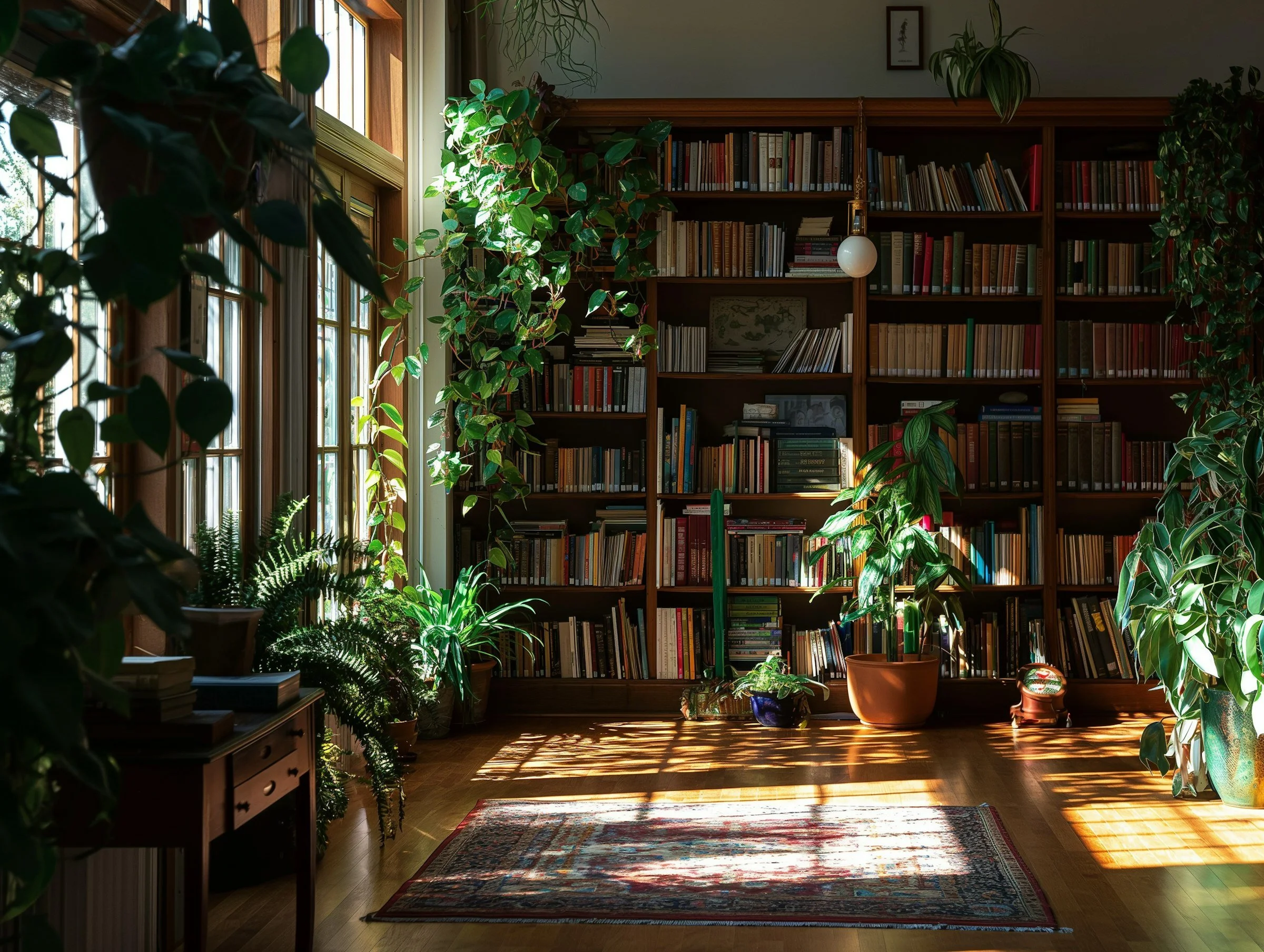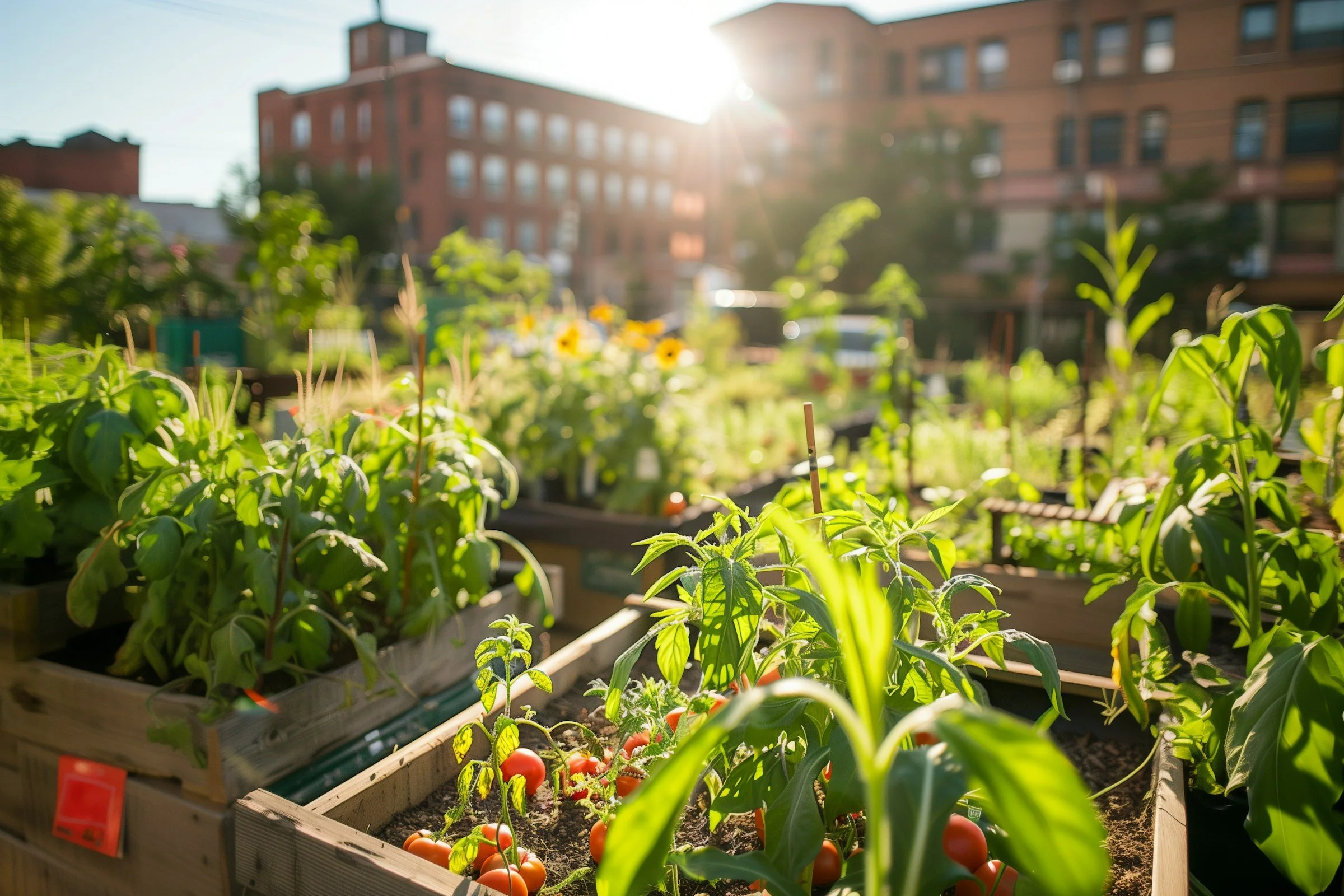Embarking on Your Herbalism Journey: budget-friendly and sustainable tips
I’ll be honest, as I am starting my herbalism journey, the cost of procuring myself certain tools and resources is definitely making me apprehend the whole thing. I’m not trying to go broke while starting this journey. However, money shouldn’t be what deters me from achieving a healthier and more holistic lifestyle. If you share the same sentiments, the cost of it all shouldn’t make you second-guess this amazing journey you’re about to embark either.
Let's explore some budget-friendly and eco-conscious ways to help us dive into herbalism while being kind to our wallets and the planet.
1. Use What You Have
Before you rush to Amazon, Target or Wal-Mart and buy all of the fancy herbal tools or ingredients you can find, take a look at what you already have at home, notably, in your kitchen.
There are some gems in your fridge and spice cabinet
Many common kitchen herbs and foods like thyme, rosemary, sage, ginger, turmeric, onions, and pineapples have medicinal properties. Once you’ve learned more about their medicinal properties and use by doing some research, go ahead and experiment with making infusions, decoctions, tinctures and other herbal preparations! Have fun with it, you’ll learn best by experimenting and having first-hand experience.
💡 Keep a herbalism journal where you’ll dress up the herb’s profile (scientific name, origins herbal actions, energetics, constituents, etc.) and write your observations when you’ve tested them. Did you make an infusion, a tincture, some capsules? What was the dosage and how long did you take it for? How did it make you feel?
Credit: Bundo Kim
Reuse and Repurpose tools and containers
Glass jars, specifically airtight jars, can be used for storing dried herbs, infusions, tinctures, and oxymels. So, don’t throw out your spaghetti sauce jars, jelly jars or even your old tea tins containers, wash them and reuse them!
Let’s stay in the kitchen for a moment; it’s the gift that keeps on giving when it comes to herbalism. You’re more ready to start your journey than you thought: your fine mesh strainer, cheeseclotch/nutcloth, funnel, measuring cups, food scale, blender and parchment paper are all tools that you’ll be using frequently. Along the way, you will more than likely find more creative ways to repurpose and reuse items from your kitchen or even around your house to support your journey.
Labeling is a crucial part of being an herbalist. Many herbs look alike, especially when dried and crushed, so you’ll want to make sure you know exactly what you’re using and for what. Then, when you’ll dabble into different preparations such as tincture making, tea blend crafting, glycerite making and more, you won’t be able to bypass labelling. An easy way to go about labeling in an eco and budget-friendly way is to recycle old labels or use painter’s tape to mark your jars for hassle-free identification.
2. Books and Resources on a Budget
There is an overwhelming amount of free or cost-effective resources available to help you learn about herbalism, especially as a beginner. From the internet, to your local library, here’s how to take advantage of what is available to you right around the corner.
Dive into Free Resources
While it can be tempting to splurge on the latest and most popular herbal books, don’t forget about your local library! Libraries often carry a wide range of herbal resources, from beginner guides to in-depth references. Plus, many libraries now offer e-books and online resources, so you can access a wealth of information at home or on the go..
Websites like Anima Mundi, Herbalgram, Mountain Rose Herbs, and the Herbal Academy provide free articles, newsletters, videos, and webinars that are incredibly informative. For access to free scientific articles, PubMed is a goldmine. Scientific evidence is essential when you are looking up different ailments, herbs, and their constituents.
Don’t underestimate the power of social media—Instagram, Tiktok and Pinterest are filled with herbal enthusiasts sharing knowledge, tips and recipes!
Youtube is the O.G. when it comes to learning about… well pretty much anything. You’ll find very in-depth videos on herb profiles, tips to help you start your herbalism journey, tutorials for different herbal preparations, and much more. The channels I follow and always go back to are Moss Medicine, Iwilla Remedy, Herbal Ash, and The Honeystead. I love each of them because they are very hands on and transparent when it comes to herbalism being a constant learning journey.q
Explore lower cost options
You might not have all of the tools already on hand at home. A way to save some money and be gentle to the planet while you stock up on your new resources is to hit your local thrift shops! There is so much you can find in the homeware and books sections. You can find some books on plant medicine, on biology, vitamins, etc. All of the tools that were mentioned in the first section of this article are things you may stumble upon at the thrift shop, plus there’s always some cute and funky tea cups waiting for a new owner.
I’ve personally found some relatively cheap online courses athat have helped me greatly in dipping my toe in herbalism and given me the confidence to continue to learn on my own. I’ve enjoyed a course given by Brianna Cherniak*, a Black herbalist that I’ve followed on social media for a good while now. I’ve been looking to sign up for Iwilla Remedy’s introduction course to deepen my knowlede and continue to venture out on my own after that. It makes it all the more exciting to start experimenting with herbs and preperations, and then find out what effects they’ll have on my body and those around me that will inevitably become my test subjects.
3. Practice Mindful & Responsible Foraging
Foraging for wild herbs is such an exciting way to go out there to test and improve your knowledge about local plants and their uses. Take walks in local parks or nature trails to spot edible plants. Just remember to forage responsibly! Leave plenty of plants behind to regrow, and avoid uprooting and overharvesting. We are beings living in symbiosis with nature and should respect it as it does so much for us.
Please, do not forget that safety is primordial! Here are some foraging tips to help you navigate your next adventure:
Research First: Familiarize yourself with local plant life. Resources like “The Forager's Harvest” by Samuel Thayer can be a great starting point as it provides guidance on identifying and harvesting wild plants safely.
Go with a Guide: If you’re new to foraging, consider joining a local group or going on guided walks to learn the ropes.
Sustainable Practices: Only take what you need and ensure you’re foraging from areas free of pesticides and pollution.
Always double check: Many herbs look alike and have very intricate differences. While 2 herbs may look very similar, their effects on our bodies will more than likely not be the same and can possibly be toxic. So, make sure that you have correctly identified what you just foraged.
4. Grow your own herbal garden
One of the most rewarding and cost-effective ways to start your herbalism journey is to grow your own herbs. You don’t need a huge garden; many herbs thrive in small spaces or even in pots on your windowsill. Growing herbs at home can save you up to 75% compared to buying them [The National Garden Bureau], and here are some tips to get you started:
Compost: Make your own compost from kitchen scraps to nourish your plants. It’s a great way to recycle and enrich your soil.
Repurpose Containers: Use old pots, mason jars, tin cans or even yogurt cups as planters. Just make sure they have drainage holes.
Choose Easy Herbs: Start with beginner-friendly herbs like basil, mint, rosemary and chamomille. They’re hardy and quick to grow! You can even start growing garlic plants from a clove; ginger is another one that you can grow from some piece that you get from the supermarket.
I for one am so excited to try this out! I’ll be starting with garlic, basil and ginger. Will report back with some updates!
💡Learn about plant propagation techniques to multiply your herbs without buying new plants. For example, you can easily propagate mint or basil by placing cuttings in water until they root. It’s a simple way to expand your garden without additional costs.
5. Build/Join a Community
Building connections with others can enhance your herbalism journey without costing a dime. Look around, there are herbal enthusiasts everywhere, you just need to find them!
Tap into your local & online communities
Many herbalists offer free or low-cost workshops that can provide invaluable hands-on experience. Check out community centers, farmer’s markets, or herbal groups on social media. You might even find mentors in those herbalists who are willing to share their knowledge and help you on your journey.
You can even check out social media to see if there are some herbal enthusiasts organizing meet-ups to exchange knowledge, books, or even cuttings from their gardens. You’ll leave not only with tremendous advice and resources, but perhaps new friendships too!
Community gardens are a treasure trove for aspiring herbalists. Not only can you grow herbs, but you can also learn from seasoned gardeners. Many community gardens offer workshops or events where you can get your hands dirty and gain invaluable knowledge.
Lastly, online forums like Reddit have vibrant herbalism communities where you can ask questions and share experiences.
💡 Check out platforms like Meetup or local Facebook groups to find gardening clubs or herbalism workshops in your area. Many are free or have a nominal fee, making them budget-friendly.
Build your own community
If you can’t seem to find a community around you that is providing what you are looking for, then it’s your opportunity to do it yourself! That’s what led me to create perTerram. It seemed like there wwere few people sharing their humble beginnings with their herbalism journey. It can be intimidating to only interact with people who have “already made it”, what about those of us who are anxious to start but don’t know where to or feel inadequate?
Here’s what you can do to start building your own local community
Start a local herb exchange group where members can swap herbs and knowledge, regardless of where they are at on their journey
Organize community workshops to learn and teach herbal skills.
Share resources like books or tools to reduce individual costs.
💡 While your community can meet up in real life, take advantage of online tools like Facebook Groups, Discord or even Instagram to keep the conversation going, as well as to make it easier to share more resources and keep most of the information in one place, accessible to all members.
6. Craft some DIY Herbal Preparations
Once you’ve gathered some herbs, you can start crafting your own remedies. Simple recipes for herbal teas, tinctures, and infused oils can be made with minimal ingredients and tools. For instance, a basic herbal tea requires only dried herbs and hot water—easy peasy! Making your own herbal products is not only cost-effective but also incredibly rewarding with all of the hands-on experience you get to have.
Use all of the tips that were previously shared in this article to guide you towards making your first DIY preparation:
Start with simple preparations like teas, infused oils, or salves.
Use common household items like stainless steel strainers or a cheesecloth for straining.
Repurpose clean, empty cosmetic containers for your homemade products.
Use online resources, your local library, and local communities to gather information about herbs and their benefits and different herbal preparations you can test out
There you have it, fellow plant medicine enthusiasts! Remember, herbalism is not just about the end product; it’s a journey of exploration, learning, and connecting with nature. Starting your herbalism journey doesn't have to cost a fortune or harm the environment. With a little creativity, community spirit, and respect for nature, you'll be well on your way to becoming an eco-conscious herbalist. Don’t forget: the most important ingredients are curiosity and passion - and those are absolutely free!
So take a deep breath, gather your tools (or lack thereof), and enjoy every step of the process. Feel free to share your experiences or ask questions in the comments below! Let’s grow together! 🌱






